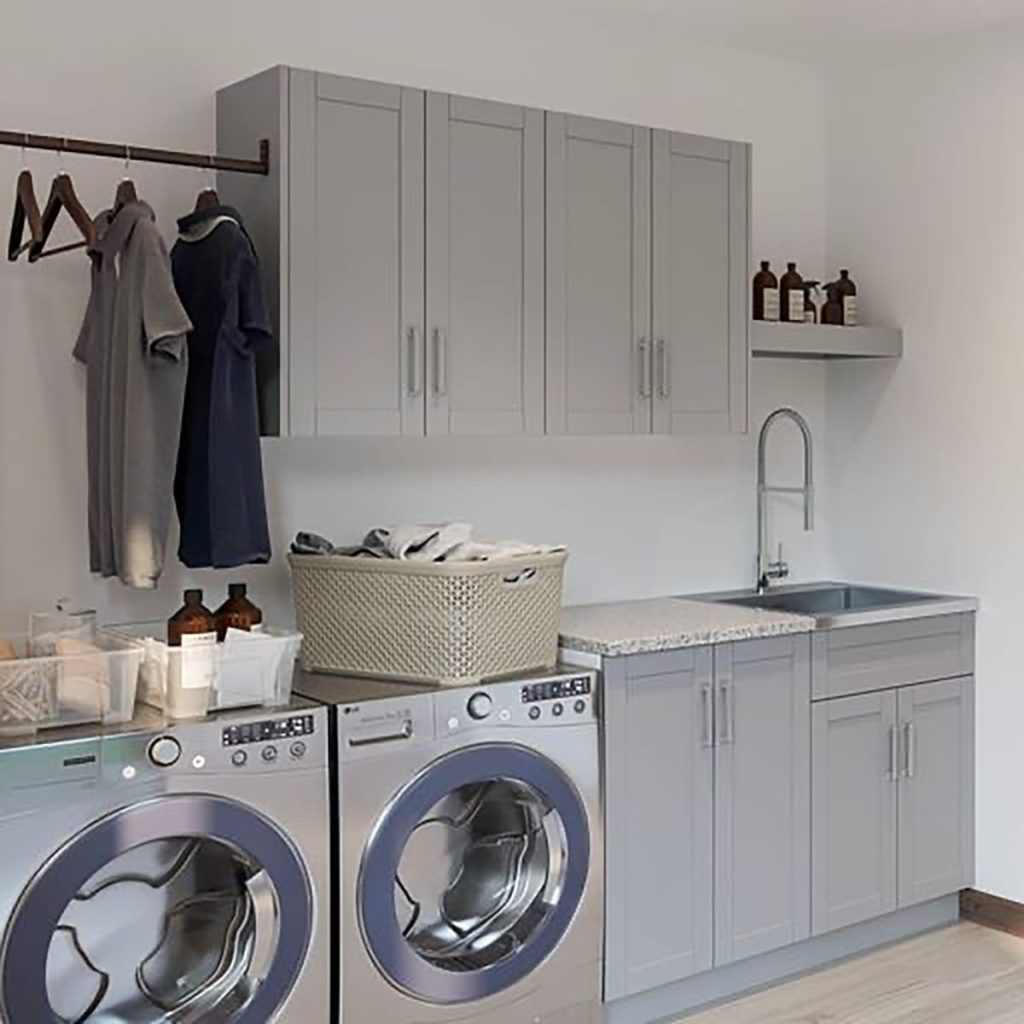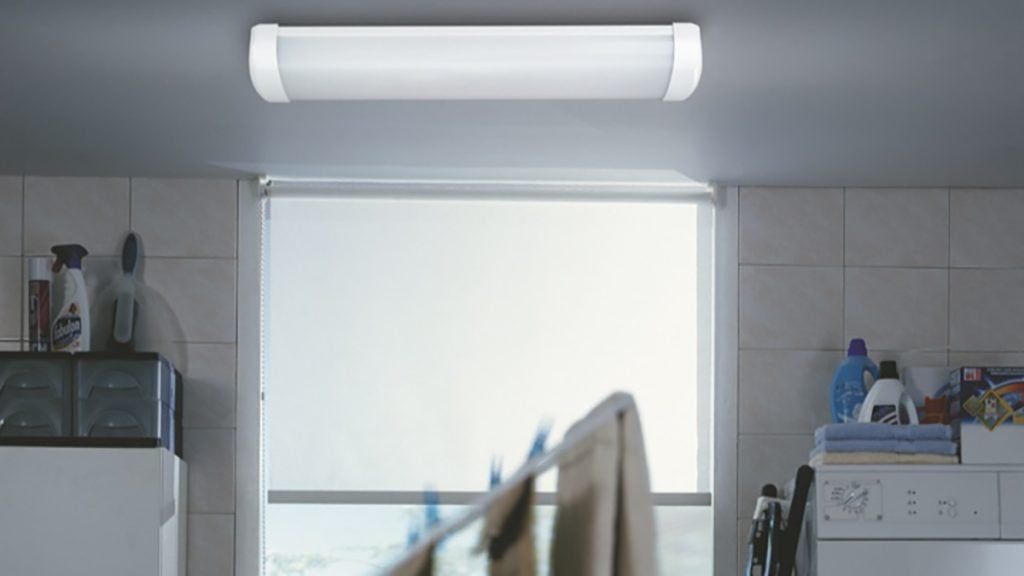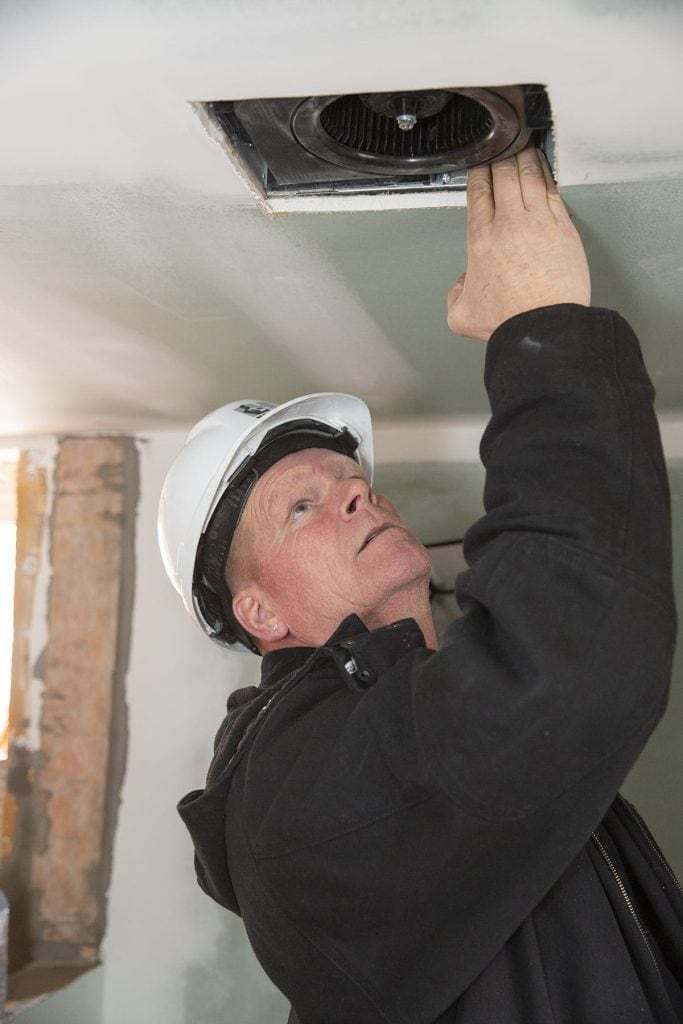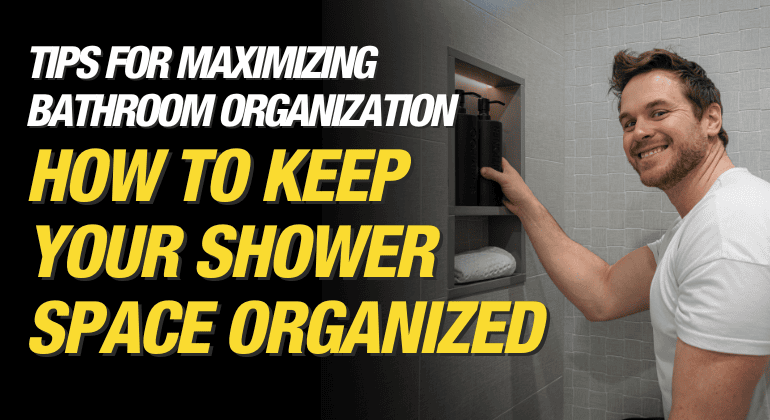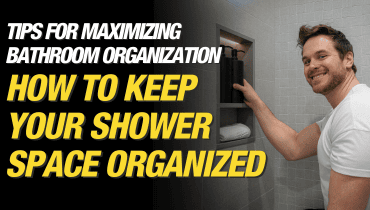HOW TO STAY ORGANIZED IN A SHOWER Keeping your bathroom organized can be a challenge, but with the right strategies and storage solutions, you can transform your shower area into...
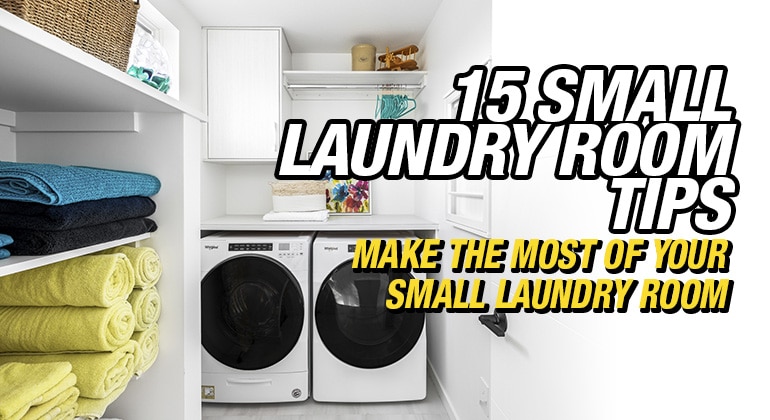
15 Small Laundry Room Design Ideas & Tips
By Sherry Holmes
Mike’s Advice / Bathroom Renovation
Wednesday, April 6th, 2022 @ 10:03am
15 Tips To Make The Most Of Your Small Laundry Room
Laundry, we all have it, and it’s one of those chores you either love or hate. I happen to like doing laundry, well, I used to. Since I’m in construction, I tend to have a lot of dirty clothes. Add a husband in construction and two little girls, make for way more laundry now!
Some people have the luxury of having a large laundry room. Still, our laundry rooms are typically small for most of us, so it’s essential to maximize space and functionality, in addition to having good quality appliances, proper lighting, and proper ventilation.
Here are some tips to help you make the most of your small laundry room:
How do you Maximize Space in a Small Laundry Room?
The best way to maximize the space in any room is to utilize as much space as possible creatively. Storage space is a big bonus in any room but particularly useful in a laundry room.
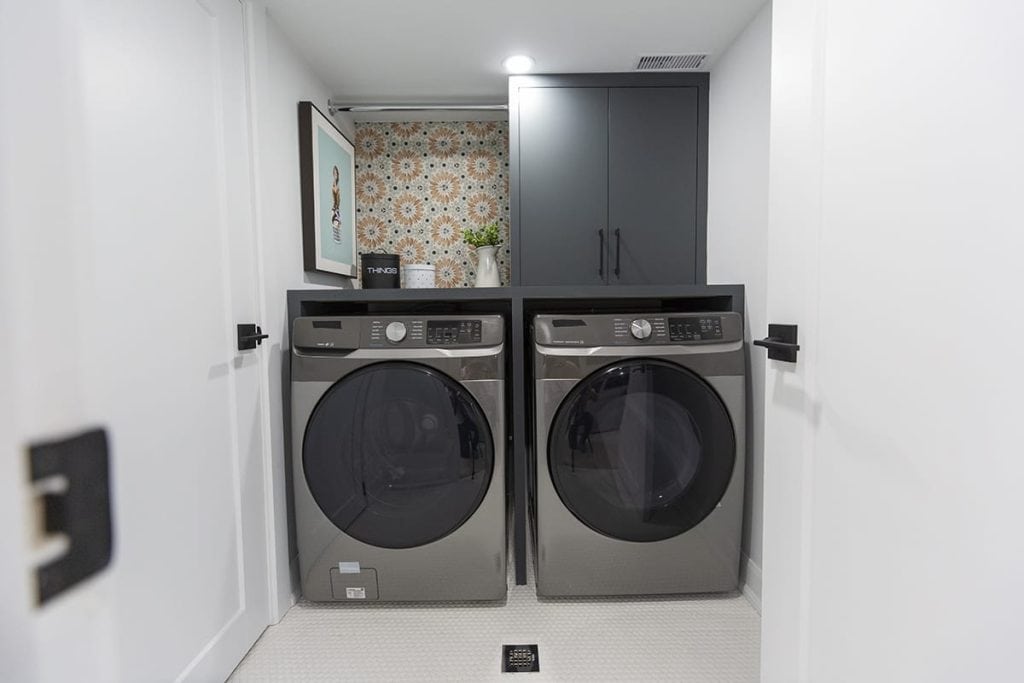
Laundry Room with Storage Above The Washer And Dryer. Photo from Holmes Family Rescue
Installing floor-to-ceiling cabinetry will allow maximum storage while keeping everything organized and out of sight. Easy pull-out drawers are great for laundry products and supplies, and long vertical cabinets are great for brooms, vacuums, and other cleaning supplies.
Will redoing my laundry room add to the value of my home?
Traditionally, the laundry room hasn’t had much love. Typically, it’s in the basement, with the basics, a washer, dryer, and laundry sink, likely on an unfinished floor in a room or area of the basement with an ugly single light – not very inviting and creepy.
RELATED
If I’ve just described your laundry room, spending a little money (and it doesn’t have to be a fortune) on redoing your laundry room is a great idea. It will make it more inviting and functional and make the experience enjoyable for you and prospective buyers. So, yes, upgrading your laundry room will add value to your home.
Many new home builders also now understand and recognize the importance of a well-functioning laundry room for today’s homebuyers, making sure to incorporate it in the design right from the start.
Tip #1 – Where is the best place to put a laundry room?
Well, that depends on your needs. The laundry room, as I just mentioned is, typically situated in the basement if you have an older home. Laundry rooms in unfinished basements provide a level of protection from the rest of the living area, should you have an unfortunate flood.
However, laundry rooms can be found on the main floor near the kitchen or upstairs near the bedrooms in many modern homes. Another common site is next to the garage allowing the laundry room to be used as a mudroom, which is great for busy families and pets.
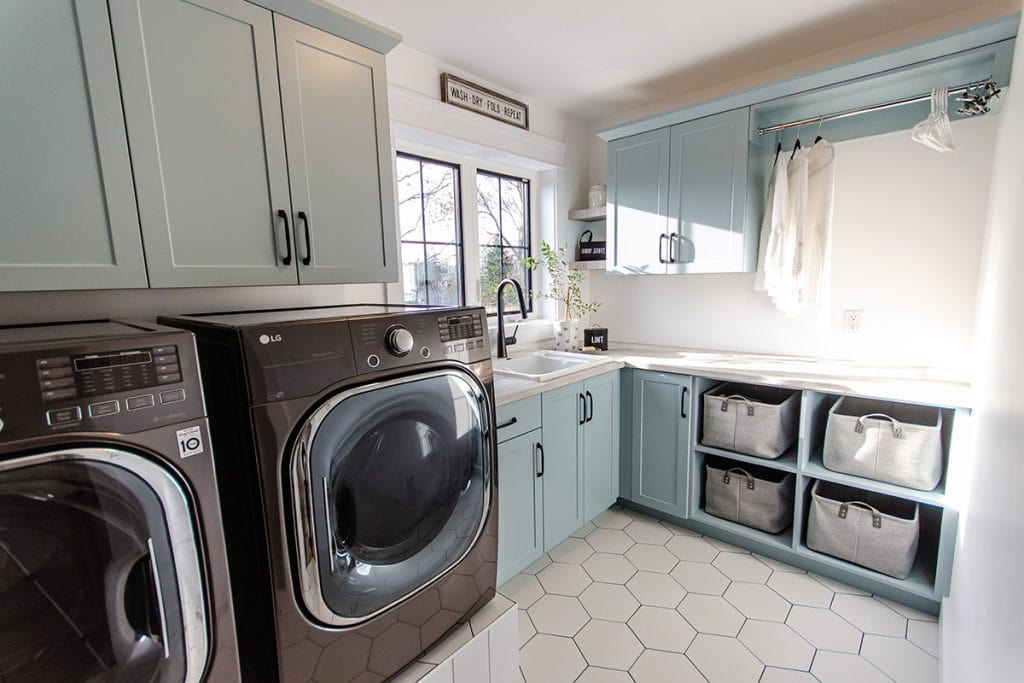
Main floor laundry room by Chris Franklin Homes, Holmes Approved Homes Builder
If you are in your forever home, my dad always suggests you have everything on one level, especially if you have mobility issues.
RELATED
Read This Before Renovating Your Laundry Room
Remodeling for Accessibility and Aging
Tip #2 – Use Laundry Room Cabinets to Add Functionality and Storage
Being a bit of a neat freak, having lots of storage helps me stay organized, with everything having a designated space. I’m also a big fan of floor-to-ceiling cabinets. It’s the best way to get the most out of your small laundry room. However, custom floor-to-ceiling cabinetry can come at a premium price, but there are other alternatives to consider.
We recently started working with NewAge, a welded steel cabinetry and shelving manufacturer. They have a great selection of wall-mounted racks that will help keep any small laundry room organized and clutter-free. Plus, it’s an integrated system so that you can customize your layout with different design and style options.
Consider swapping the door handles or painting an accent wall for a much-needed lift.
Tip #3 – Consider Adding Shelves In Your Laundry Room
There are many creative ways to add storage, from lots of ready-made shelving units on wheels to creative up-cycled pieces of furniture. You would be amazed what a coat of paint will do to a tired old bookcase – a great storage solution on a budget!
Incorporating floating shelves with matching baskets is another excellent way to streamline storage. Side-loading washers and dryers are easier to integrate storage. However, like my dad, some prefer a top-loading washer, so keep that in mind when you are setting up your laundry room.

Laundry Room by RDC Fine Homes, Holmes Approved Homes Builder
Free Standing Shelving Systems
A free-standing shelving system is a great alternative to built-in cabinets. They are strong and practical and large enough to easily add different size baskets or hampers and hanging areas. You can also add wheels for easy maneuvering in the space.
Tip #4 – What Type of The Sink Should You Get in Your Laundry Room
While a sink in the laundry room is convenient, it isn’t required if you have the proper plumbing that allows the water from your washer to drain into the sewage line. However, a sink is very beneficial, and I highly suggest having one — it’s great for handwashing articles of clothing, cleaning oven racks, or even bathing your pup!
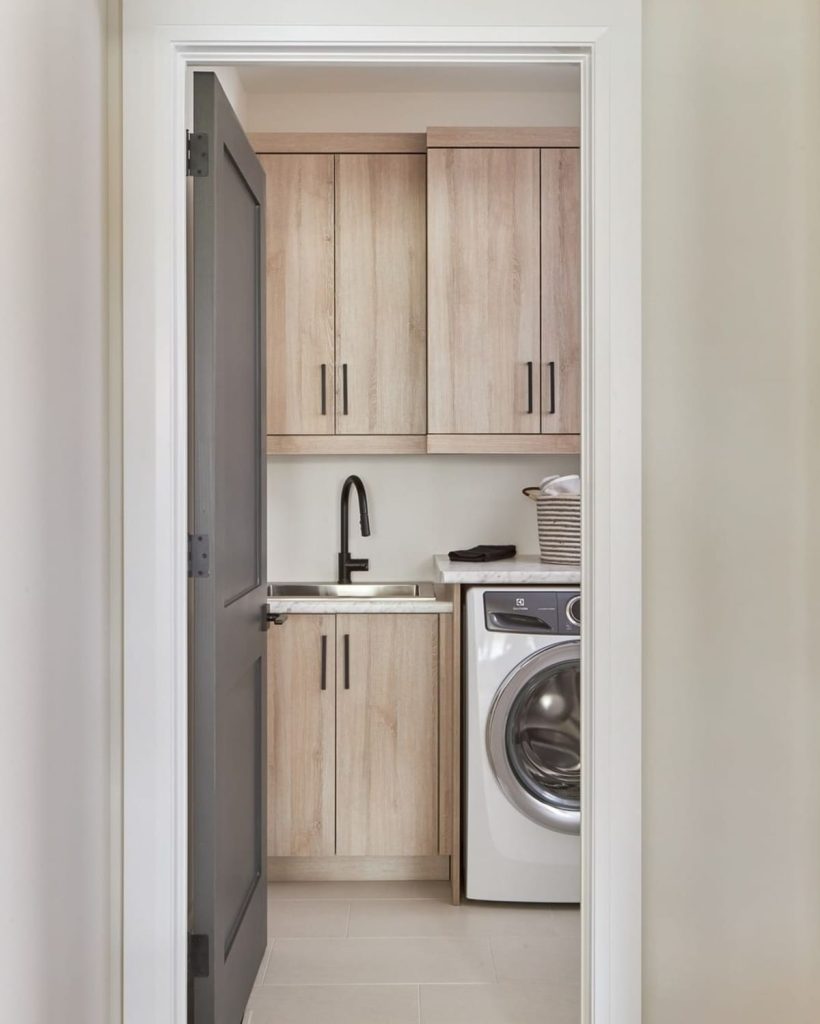
Laundry Room by Rinaldi Homes, Holmes Approved Homes Builder
Laundry sinks, or utility sinks, have been traditionally acrylic and not very pretty, but they are functional and practical as they are stain, scratch-resistant, and cost-efficient. Other materials such as stainless steel and porcelain are becoming more popular in upgraded laundry rooms.
Tip #5 – Is A Stackable Washer and Dryer or Side By Side Unit Better?
Stackable washers and dryers are a good choice for individuals who want to reduce the footprint size that their appliances take up and make the most of a small space.
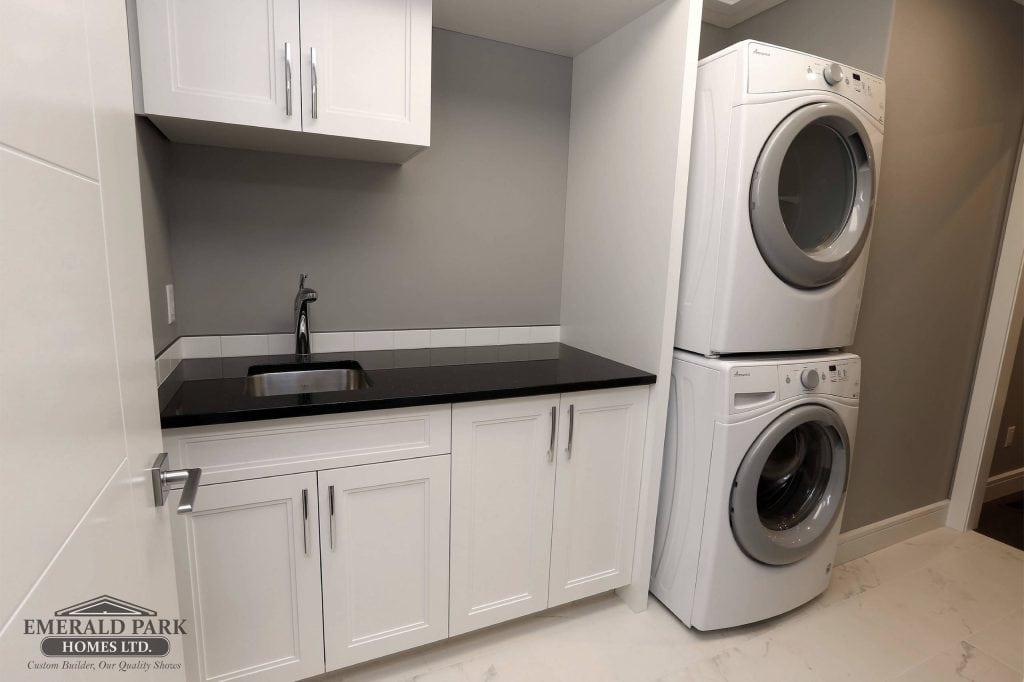
Laundry Room by Emerald Park Homes, Holmes Approved Homes Builder
When compared to side-by-side washer/dryer sets, there is no discernible difference in performance. It comes down to preference and how much space you have to create your laundry room.
Tip #6 – Build A Countertop to Make Use of the Space Above Your Appliances
Side-by-side side loading washer and dryer sets are a great option. Some higher-end styles come with raised bottoms, so you don’t have to bend down so low – great for people with back issues.
Consider installing a countertop above your appliances to get the most out of your laundry room space. Every laundry room needs some countertop space for folding and organizing laundry. Use the balance of the wall space with upper cabinets or floating shelves. I love floating shelves!
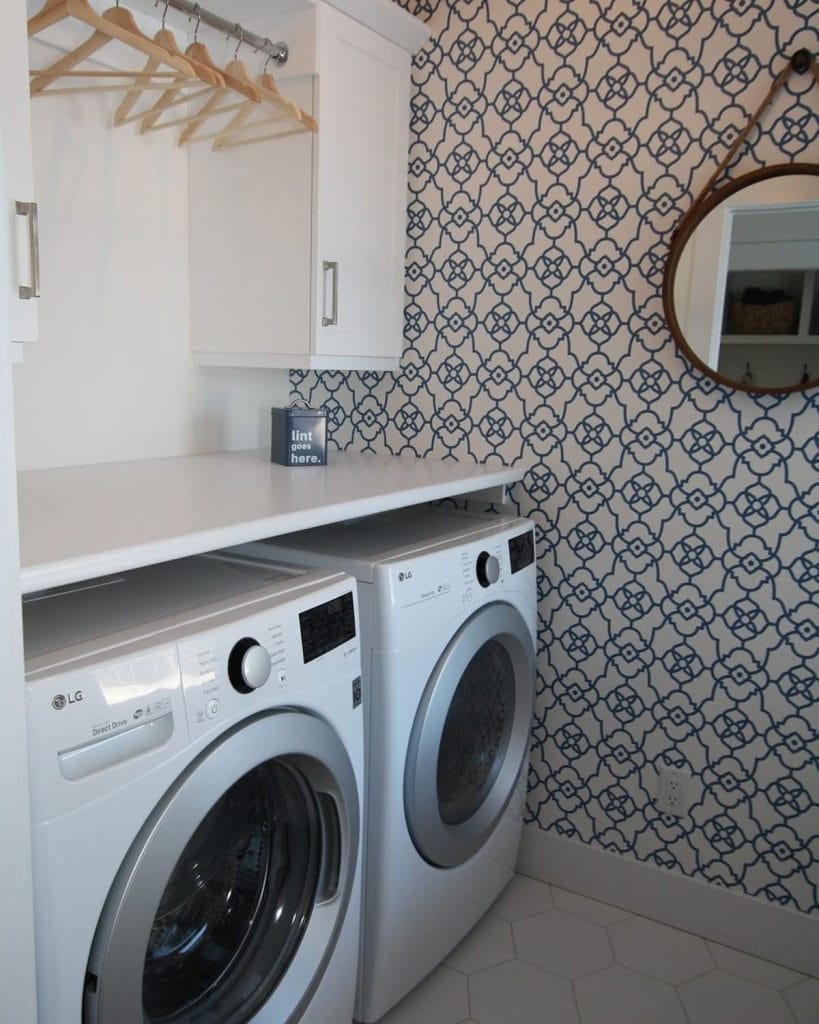
Laundry Room by Chris Franklin Homes, Holmes Approved Homes Builder
Tip #7 – Laundry Room Lighting Tips & Choices
Lighting is one of the essential features of any space. Similar to the kitchen and bathroom, layered lighting is vital and the same rules apply to layering in other rooms of the house.
Natural sunlight is ideal for washing clothes since it allows you to quickly assess how dirty or clean something is. Of course, not all laundry rooms have a window.
Where LED illumination is beneficial, consider utilizing ceiling lights or a series of pot lights above and below the cabinets. You’ll make the space more functional, and doing the laundry might even become more enjoyable.
RELATED
Consider getting LED light bulbs! I personally love Philips LED lights! Not only do they have a variety of lighting to choose from like smart bulbs and dimmable lights, but their LED lights generally use up to 90% less energy than traditional incandescent lights without compromising brightness. These bulbs can last you for years which means you save money on your energy bills, and help the environment at the same time!
Tip #8 – How to Properly Ventilate Your Laundry Room
Your washer and dryer produce a lot of heat and humidity, and all this warm, humid air needs to be vented outside correctly. An exhaust fan helps control moisture levels, prevents mildew, and helps improve indoor air quality. We always install Panasonic exhaust fans into every laundry room we renovate.
For your dryer connection, the building code states that smooth metal hoses should be used instead of corrugated plastic hoses. Corrugated hoses accumulate a lot of lint and are a common cause of dryer fires. Soft metal hoses trap less lint and are easy to clean.
Tip #9 – Electrical Safety Tips For Your Laundry Room
That lovely washing machine needs to be on its own circuit, with a 120-volt 15 or 20-amp receptacle. The outlet should be hidden behind the machine and out of reach. Tamper-resistant outlets are required for any outlets within a child’s reach.
At least one other receptacle must be installed in the laundry room to support any other 120-volt 15-20 amp receptacles. These outlets will power your iron, steamer, heated drying rack, or any other high-tech solutions you’re adding and can be on the same circuit as that for the washing machine.
GFCI Outlets
A Ground Fault Circuit Interrupter must be installed in any receptacle within 1.5 meters of a laundry sink – or any sink for that matter (GFCI)
Surge Protector
We spend thousands of dollars on our appliances and electronics, and when we look after them, they will last a long time. That’s why we always encourage homeowners to install a whole-home surge protector.
This little device will help protect all your appliances at the source from unexpected electrical surges and brownouts. We install one in every single one of our projects. Please work with your licensed electrical contracting business to ensure correct wiring and installation.
RELATED
Hiring a Licensed Electrical Contracting (LEC) Business
When you hire a LEC, you can rest assured that the work is done legally and safely. A LEC holds a business license and employs a Master Electrician who is knowledgeable about the Electrical Safety Code and any installation requirements. A LEC is licensed to perform all electrical work in a home and hires only licensed electricians.
Only licensed electrical contracting (LECs) businesses hold a 7-digit ECRA/ESA license number, demonstrating that they are authorized to offer electrical services to the public in Ontario. For electrical work conducted outside of Ontario, consult with your provincial electrical authority regarding codes, specifications, and permits.
RELATED
Tip #10 – How to Organize a Small Laundry Room?
Use practical storage solutions and organization to make the most out of your space, no matter how little space you have. Be creative and have fun.
Hooks
One of the easiest ways to increase the functionality of a small laundry room is to add hooks. They come in a variety of styles and materials and can be placed almost anywhere – along a wall, behind a door, or even incorporated into a bench.
Drying Racks
I work out a lot and don’t like putting my workout clothes in the dryer and as a result, I have a lot of clothes to air dry. I found a wall-mounted drying rack is a great feature – it doesn’t take up a lot of room and they can even be mounted on the ceiling.
Also, installing a hanging rod in between cabinets is another good solution. I’ve also read about electric drying racks, similar to heated towel racks, which could be a great addition depending on your needs.
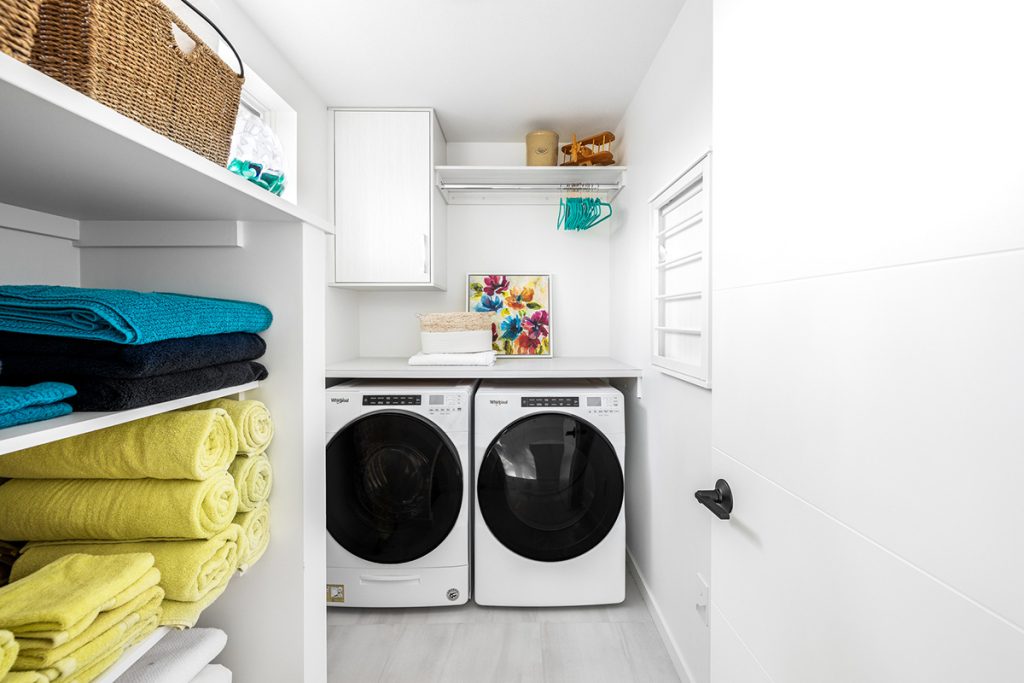
Laundry Room by Lexis Homes, Holmes Approved Homes Builder
Storage Baskets and Open Shelves
Open shelves or floating shelves are great for keeping your laundry products close at hand but out of reach of little people. If you are like me and prefer things hidden, baskets are a great solution as the items are hidden but still easily accessible. I suggest using all the same baskets for uniformity and labelling each basket will help keep you organized.
It’s best to have a mix of drawers and cabinets but remember to leave enough space for hampers. Hampers are one of my favorite things since they make it easier for me to keep track of my family’s clothing. I like to keep things separate, towels and linens, lights and darks, the girl’s clothes as well as all of our construction gear — we have a lot of laundries!
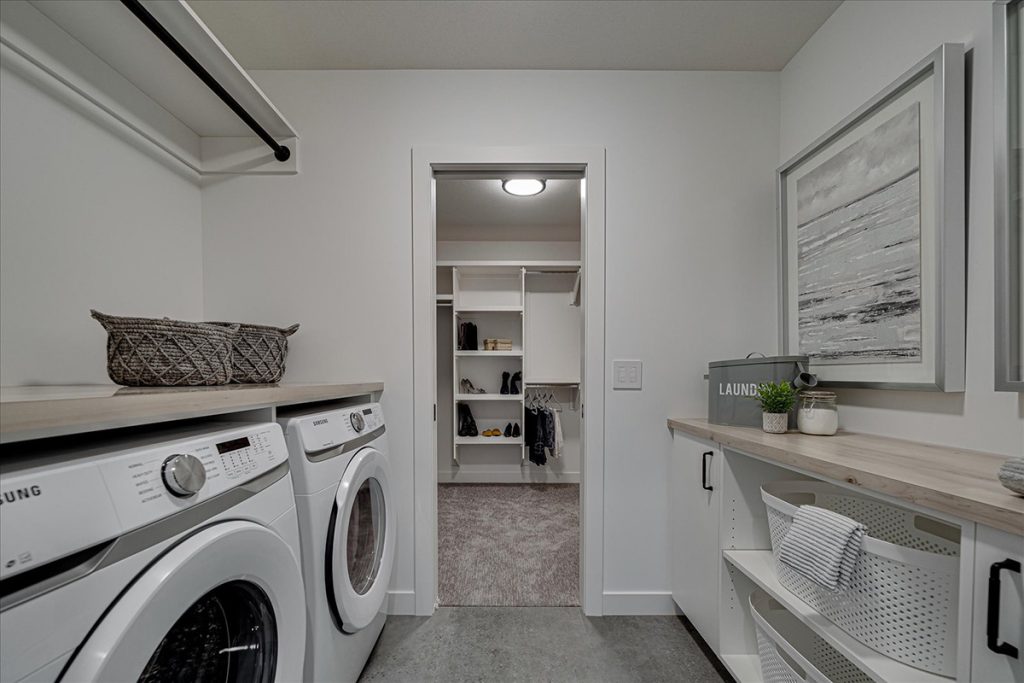
Laundry Room by Lexis Homes, Holmes Approved Homes Builder
Pegboards
The laundry room can quickly evolve into a disorganized dumping ground. To keep all of your cleaning products and odd objects organized, hang a pegboard on a blank wall. I love peg-boards. Hanging baskets can be placed on a peg-board, or in almost any available area, on a wall, inside a cabinet, or on the back of a door.
Folding Ironing Board or Built-in Ironing Board Cabinet
Most people have an iron, but do you use it? I prefer using a steamer to remove wrinkles from a dress or blouse. But I still have an iron and an ironing board, even if it does collect dust.
Fortunately, lightweight foldable ironing boards are available that can hang behind a door or inside a cupboard – perfect if you are short on space. You can even get built-in ironing boards in cabinets.
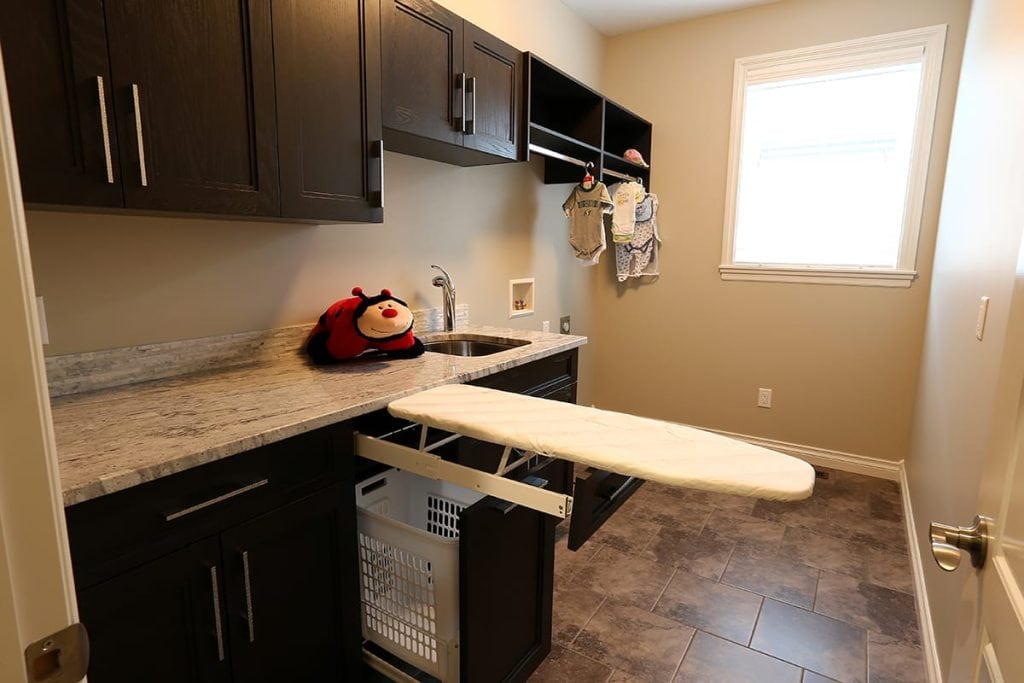
Laundry Room by Emerald Park Homes, Holmes Approved Homes Builder
Tip #11 – Create An Accent Wall To Make Your Space Feel Bigger
Décor is also important, especially as you will be spending a fair amount of time in this room, so incorporate items and colours you like.
You can even consider an accent wall. An accent wall draws attention to a portion of the space or adds decorative flair to a room. Accent walls can tie a colour scheme together and add a sense of excitement to a room’s design. When used as an accent wall, even darker hues that might usually make a space appear smaller will make the area feel more significant. Using paint, wallpaper or a fun backsplash can add some fun to your laundry room.
Paint
Laundry rooms, even with plenty of ventilation, can become damp and humid at times. Use a semi-gloss paint finish for most of the wall space, similar to how you would in a bathroom, but a matte finish can be used to accent areas further away from the appliances.
The room will appear bigger if the far wall is painted a dark contrasting colour and the side walls are kept light. Another option is to paint a specific feature, such as a wall of shelves or cabinets, to draw attention while making the rest of the area feel lighter.
Wallpaper
Avoid wallpaper that is delicate and fragile like silk, grass, or velvet in areas with variable temperature and humidity. Use solid latex or canvas-backed wallpapers. They are durable, easy to clean, and will last a long time. Also, lighter colours and small patterns help small rooms look bigger.
Tip #12 – Do You Need a Backsplash in a Laundry Room?
Adding a backsplash around the sink area is probably a good idea especially if you plan on using your sink a lot. A backsplash will protect the walls from splashes and splatters.

Laundry Room by Western Living, Holmes Approved Homes Builder
Just like the laundry room floor, I would stick with ceramic or porcelain tiles. Typically, you would tile the area around the sink from the countertops to the underneath of the cabinets, or for something really fun tile an entire wall.
Tip #13 – How Do You Protect Your Laundry Room Floor?
You may know by now that my family and I are big fans of porcelain tile, especially for high traffic areas and where there is the potential for water damage. Porcelain tiles are easy to clean and durable and perfectly fit a laundry room.
You will also know that we would highly suggest waterproofing the sub-floor with the Schluter Ditra system for added protection and tile installation. For extra comfort and luxury, you might consider installing Ditra-Heat.
However, installing a washing machine drain pan is an inexpensive way to protect your floors from water damage in case of leaks. This is especially effective in upper-floor laundry rooms.
RELATED
Is A Leak Detection System Important?
You don’t want to have to deal with washing machine leaks, as they can really damage your flooring and home depending on bad it gets. I recommend installing a smart leak detector that can detect when there is a leak and send a notification to your phone and shuts off your water source within a few seconds to save your home from any potential flooding or damage.
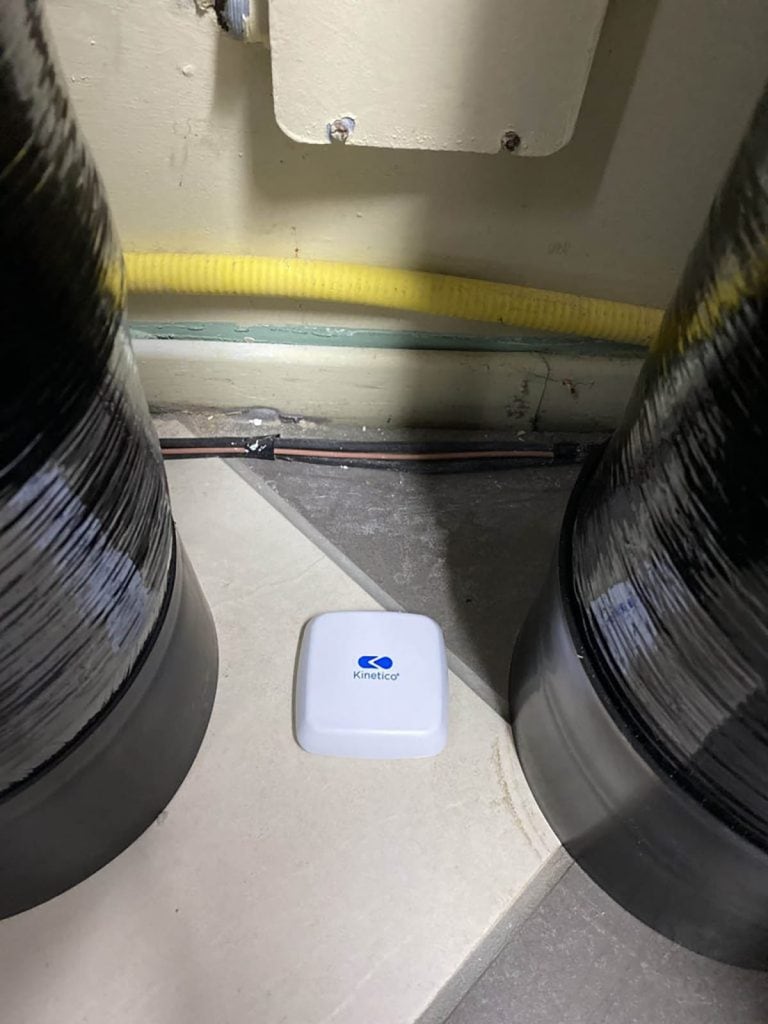
Photo of a Kinetico Leak Detector installed at my dad’s place
My dad has a leak detection system installed from Kinetico and it’s great —I highly recommend checking it out.
Tip #14 – Is Water Quality Important When It Comes to Your Laundry Room?
Over time, hard water can erode pipelines, even those connected to large appliances. Poor water quality in your washing machine can cause clogging and damage to the washer and its components, as well as rust marks and stains on your clothes.
I recommend getting a water test done by water professionals and having them recommend the right system for your home!
RELATED
Tip #15 – Energy Saving Tips for Your Laundry Room
Washers and dryers typically last a long time, but older models use more energy than today’s models. Choosing the right washer size and ensuring that the washer is energy efficient will help you save money on energy.
Clothing washers that are Energy Star certified consume about 25% less energy and 33% less water than regular washers. According to the Natural Resources of Canada, an energy star-saving dryer will significantly reduce the amount of energy—up to 20% more than a standard dryer.
Also, choosing a lower drying temperature can lower energy usage. Washers with a controllable spin cycle can extract more water from the clothes and reduce drying time as well. And finally, most laundry items can be washed in warm and cold water, rather than hot, reducing the energy used.
RELATED
A small laundry room can still be functional by maximizing space and storage, using proper lighting and ventilation. Add your own personal touch through shelving, baskets, hampers, paint colour, wallpaper, and tiles to create a space that is uniquely you and that you can enjoy being in even when you feel laundry is a chore!
READ NEXT
New Year’s Resolutions For Your Home
Your Guide to Renovating It Right – Room By Room
